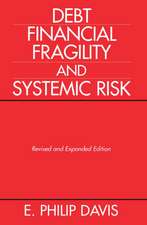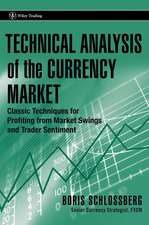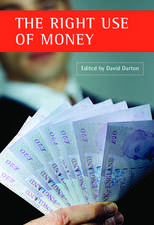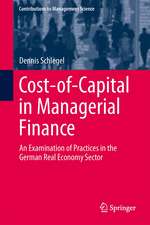The Path to European Economic and Monetary Union
Autor Scheherazade S. Rehmanen Limba Engleză Hardback – 30 sep 1997
| Toate formatele și edițiile | Preț | Express |
|---|---|---|
| Paperback (1) | 953.52 lei 6-8 săpt. | |
| SPRINGER NETHERLANDS – 5 dec 2012 | 953.52 lei 6-8 săpt. | |
| Hardback (1) | 959.82 lei 6-8 săpt. | |
| SPRINGER NETHERLANDS – 30 sep 1997 | 959.82 lei 6-8 săpt. |
Preț: 959.82 lei
Preț vechi: 1170.51 lei
-18% Nou
Puncte Express: 1440
Preț estimativ în valută:
183.72€ • 199.63$ • 154.42£
183.72€ • 199.63$ • 154.42£
Carte tipărită la comandă
Livrare economică 21 aprilie-05 mai
Preluare comenzi: 021 569.72.76
Specificații
ISBN-13: 9780792399513
ISBN-10: 079239951X
Pagini: 470
Ilustrații: XIII, 470 p.
Dimensiuni: 155 x 235 x 27 mm
Greutate: 0.86 kg
Ediția:1997
Editura: SPRINGER NETHERLANDS
Colecția Springer
Locul publicării:Dordrecht, Netherlands
ISBN-10: 079239951X
Pagini: 470
Ilustrații: XIII, 470 p.
Dimensiuni: 155 x 235 x 27 mm
Greutate: 0.86 kg
Ediția:1997
Editura: SPRINGER NETHERLANDS
Colecția Springer
Locul publicării:Dordrecht, Netherlands
Public țintă
ResearchCuprins
I: Overview of European Monetary Integration.- The Evolution of the European Union (EU).- The History of European Monetary Integration.- Annex I.1.- II: Political and Economic Dilemmas Of the EMU.- The Maastricht Treaty Ratification Process.- The Politics of the Maastricht Treaty.- The Impact of the ERM Crises on the EMU.- The Transitional Dilemmas of EMU.- EU Enlargement Implications.- The Implications of a Multi-Speed EMU.- Annex II.1.- III: Fiscal Policy and the EMU.- Fiscal Coordination and Binding Constraints.- The EU Common Budget and the EMU.- The Role of National Fiscal Policies in the EMU.- Sustaining the Maastricht Treaty Fiscal Convergence Criteria.- IV: The Single Currency, The “Euro”: Costs and Benefits.- Towards the “Euro”.- Costs and Benefits of the EMU.- Costs and Benefits of The Euro.- The Euro’s National and Regional Impact.- Annex IV.1.- V: The European Central Bank.- The European Monetary Institute (EMI).- The European Central Bank.- The Maastricht Treaty Statutory Requirements for National Central Banks.- Annex V.1.- Annex V.2.- Annex V.3.- Annex V.4.- Annex V.5.- Annex V.6.- Annex V.7.- Annex V.8.- Annex V.9.- VI: Key EMU Predicaments and Outlook.- Impact of Common Monetary Policies.- EU Financial Centers: Gains and Losses.- The “City” of London and the EMU.- The EMU and the Global Financial Markets.- The ERM II.- Maastricht Convergence Criteria.- The U.K. Dilemma.- The German EMU Predicament.- The Importance of the Franco-German Alliance.- The 1996–97 IGC Negotiations.- Possible EMU Impediments.- The EMU Blueprint for 2002.- Appendix A: Key Dates In The History Of European Integration.- About the Author.
Recenzii
`Rehman's book is therefore highly recommended to students of economics, politics and IPE. It provides the detailed information one should have to discuss seriously the risks and virtues of EMU.'
Hartmut Mayer, St. Peter's College, University of Oxford, UK
Hartmut Mayer, St. Peter's College, University of Oxford, UK
















